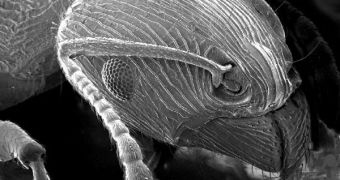Experts at the University of Texas in Austin (UAT) have recently conducted a scientific experiment in what may very well be the world's smallest test tube, measuring less than one thousandth the width of a human hair, the scientists report. Because of the small size of the tube, the team could only observe what was going on inside using a high-power electron microscope, an observation device that is capable of producing magnifications of up to 1 million times.
“The experiment is relatively simple. Essentially, we observe well-known phenomena, like melting, capillarity and diffusion, but at a much, much smaller scale than has been possible to see before,” UAT chemical engineer Brian Korgel explains. The investigation was conducted in his laboratory. The test tube was constructed entirely from a thin shell of carbon, and was stuffed with nanowires (thread-like crystals) of germanium, each of them with a small particle of gold at their tips.
As the tube was heated, the gold at the end of the nanowires melted, as it would in larger test tubes, at the macroscale. This type of research, the scientists say, may in the future be used to gain a deeper understanding of the properties behind nanomaterials, and also to further existing or developing technologies considerably, through innovation. The end results could be better solar cells, extremely lightweight materials that are incredibly strong, as well as amazing optical displays, and fundamentally different computer technologies.
“In these very small structures, the phase behavior (like its melting temperature, etc.) can be different than bulk materials and can be size-dependent. Therefore, if the structure changes when the phase change happens, then the result becomes very difficult to interpret and in fact, may not even represent the true behavior of the system,” Korgel adds. The finds are presented in a new paper, appearing in the October 16 issue of the top journal Science.

 14 DAY TRIAL //
14 DAY TRIAL //